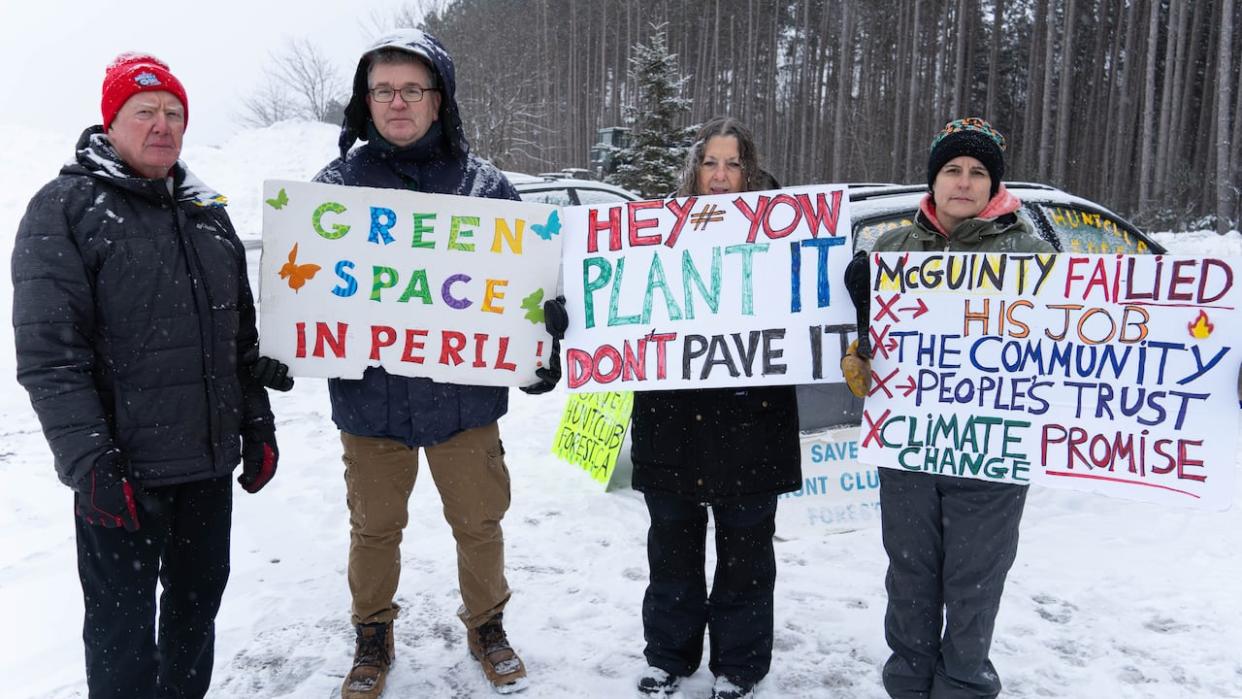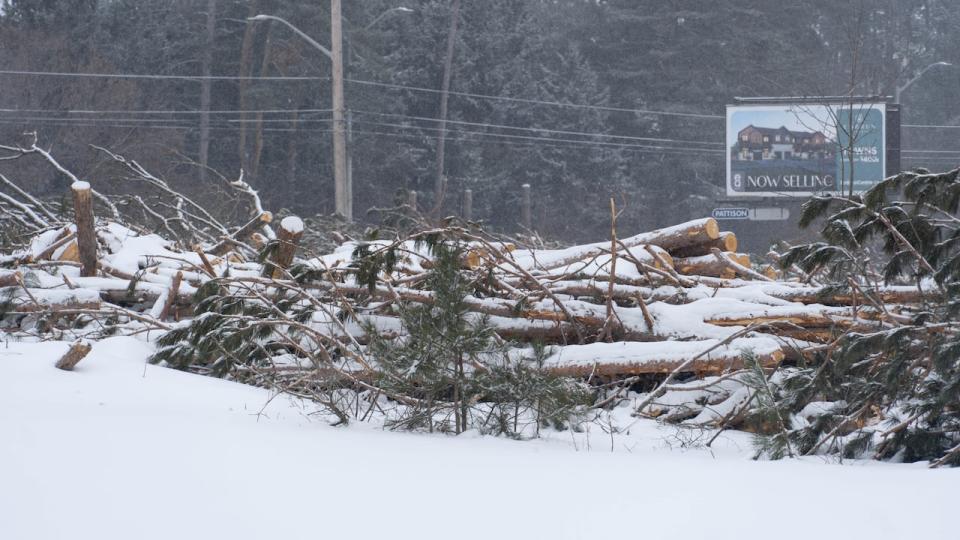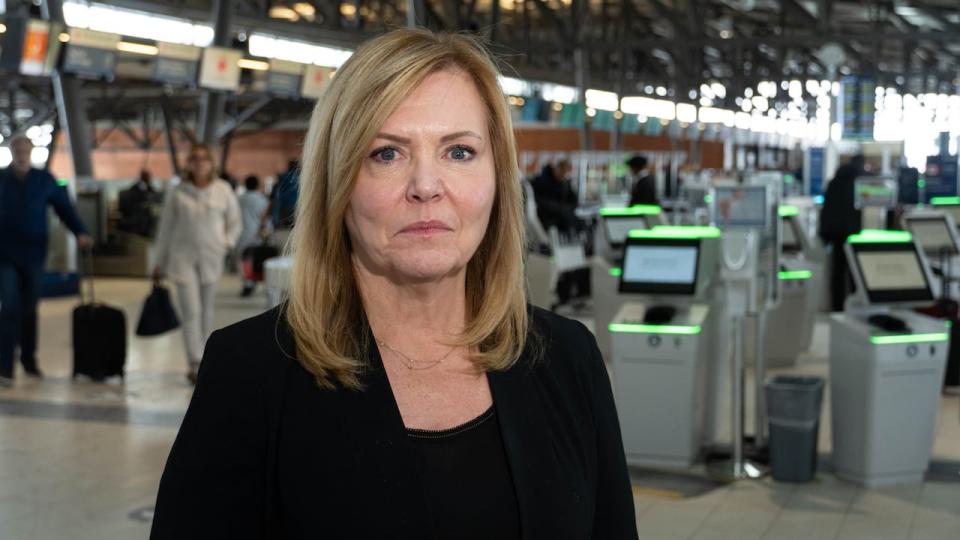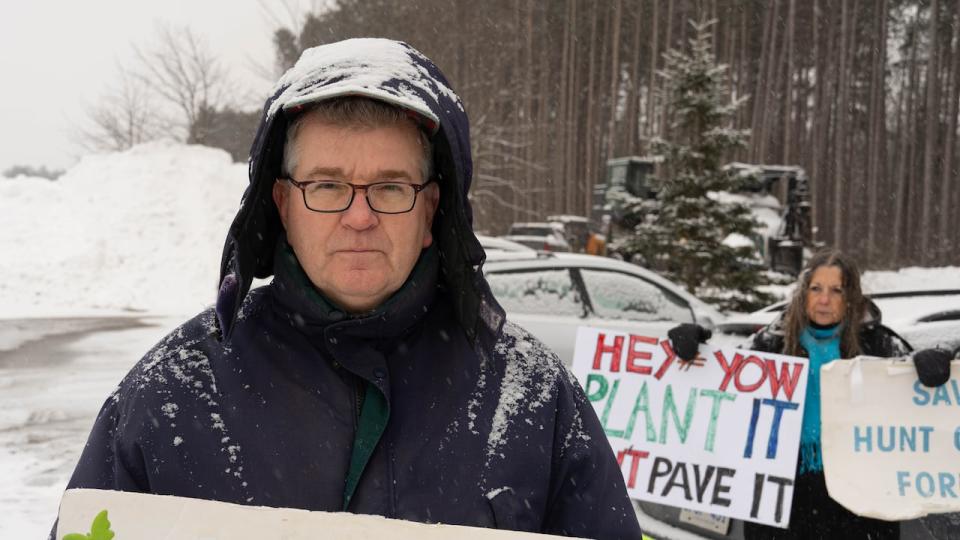Ottawa airport facing calls to replace felled Hunt Club trees

UPDATE | City council carried a motion on Jan. 24, 2024 introduced by River Coun. Riley Brockington to request the airport to plant an equivalent number of trees to those which were clearcut. Councillors Laura Dudas and Matt Luloff dissented.
The Ottawa International Airport Authority could soon be asked to replace thousands of trees recently cleared from a Hunt Club Road plantation beloved by many nearby residents.
The red pine forest that stood at 400 Hunt Club Rd. was originally planted for the purpose of cultivating telephone poles. The 10-hectare lot now sits empty, encircled by piles of felled trees.
"Their loss has been truly a loss for our community," said River Coun. Riley Brockington. "Now when you drive by there [it's] just the vast area of nothing, fallen trees and stumps … It's very hard to see."
Local residents fought to preserve the woodlot, which is leased by the federal government to the airport authority and has long been slated for development.
Even now, hardly a day goes by without a smattering of posts on the Save Hunt Club Forest social media page.
They include singalong protest videos, online petitions and shared memories — ample evidence of some residents' strong emotional ties to the forest and of relationships strained by its destruction.

Felled trees lie piled at the site of the old plantation. The Ottawa International Airport Authority said they will be sold as timber or used as fuel to generate power. (Jean Deslisle/CBC)
Brockington believes the rift between the airport and the community can still be bridged without sacrificing development plans for the property.
He'll put forward a motion at next week's city council meeting to request the airport authority replace the lost trees, but not on the site where they once stood.
Airport saw trees as unsafe
When the airport authority was created in 1997, it gained control of Transport Canada land that includes the once-wooded lot on Hunt Club.
Krista Kealey, the authority's vice-president of communications and public affairs, said the lot was already marked as commercial and, more significantly, had long been neglected.
"It wasn't maintained prior to us taking responsibility for it," Kealey said. "There was a lot of risk inherent in that plantation, and so we felt that it was in the community's best interest to block access to it."
That meant adding signs, chains and fences — all of which local residents ignored, Kealey said.
"I understand that people are looking for green space to enjoy, and if it were a safer environment we probably would have left the trees there until such a time as there was a development planned for it," she added.

Krista Kealey, the authority's vice-president of communications and public affairs, said the wooded area was slated for development even before it was leased from the federal government. (Jean Delisle/CBC)
The airport authority said expert arborists assessed the plantation as a "tangible and immediate threat to public safety." One of the cited experts, hired by the city to consider plans to turn the area into a parking lot, said he never reached that conclusion.
Brockington has another explanation for the airport's decision to clear the forest: future development.
"That's why the trees came down," he said. "The trees came down so they can start to market the property."
Residents fight to keep access
Mike Vorobej has been a driving force behind the movement to save the trees and was there when both the first and the last red pine was cut down.
"We should have never reached this point. But having reached that point, we're here today, and for the future we're fighting for this land that's behind us," he said from a parking lot overlooking the snow-covered space.
Vorobej takes issue with the airport authority's treatment of local residents — "how dismissive they are toward us, how disdainful" — and with how little dialogue there has been.

Mike Vorobej said the airport authority should have sat down with concerned members of the community before making the decision to cut down the red pines. (Jean Delisle/CBC)
The airport authority did go through a full public consultation process while drafting its 2018 master plan. The document laid out the authority's development strategy for the coming decade and reinforced the property's designation as commercial land.
Brockington and several other councillors had hoped airport officials would sit down with the community to further discuss their plans before cutting began.
Ottawa South MP David McGuinty declined an interview, but his office said he joined Brockington in those calls.
No immediate development planned
While he supports Brockington's ongoing efforts at city hall, Vorobej worries the councillor's motion is similar to a "get out of jail free card" for the airport authority.
Instead, he'd like to see the land returned to public use with new vegetation.
If you're going to remove trees, I do think you have to give strong consideration about replacing them. - Coun. Riley Brockington
Brockington feels that's a "non-starter" for the airport authority.
He said this plan is "not a gotcha campaign" but a genuine attempt to rebuild relationships and replace lost green space.
"Don't get me wrong, I support the airport overall. I want to see a strong, viable airport," he said.
"But in the same breath, I do believe they have an environmental responsibility. If you're going to remove trees, I do think you have to give strong consideration about replacing them."

The red pine forest north of the Ottawa International Airport was once frequented by local residents. (Jean Delisle/CBC)
When asked if the tree-for-tree proposal could work, Kealey could not say, but she emphasized that the city had its chance to save the trees.
"We engaged with the councillors and we had those discussions with the city and we looked at the potential land swap options and they just weren't viable options," she said.
"We've done our part there."
The land will eventually be developed, she said, but the airport has not yet put it on the market. The trees themselves will be sold as timber or used as fuel to generate energy.
Read the consultant's assessment of the red pine plantation:


